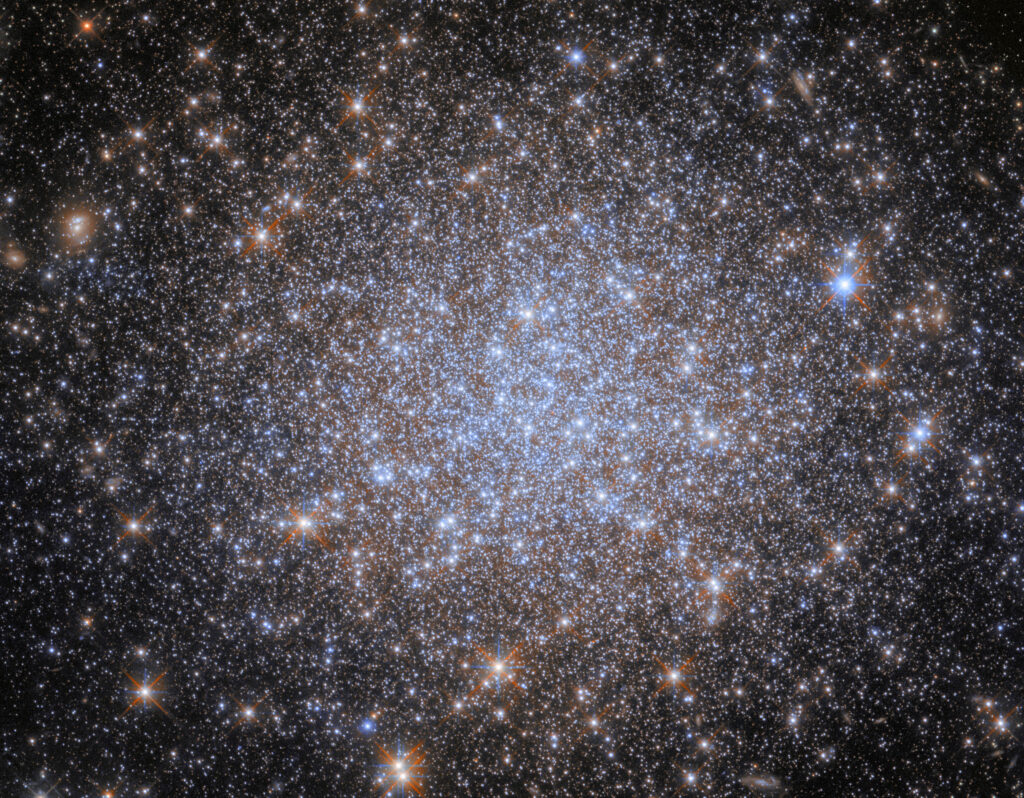The Hubble mission team has released a new image of deep space. This time, the telescope photographed the globular cluster NGC 1841.

NGC 1841 is located in the Large Magellanic Cloud (LMC), a satellite galaxy of the Milky Way, which is about 162,000 light-years from Earth. This is the name of objects that move in orbit around a larger galaxy. Many people believe that the nearest satellite of the Milky Way is the Andromeda galaxy, but this is not the case. Andromeda, on the contrary, is the nearest galaxy that is not a satellite of ours. The Milky Way also has dozens of satellite galaxies, the largest of which is the LMC. It can be seen in the southern sky with the naked eye.
One of the distinctive features of the LMC is the large number of globular clusters. This is the name given to dense groups of stars held together by the forces of gravity and orbiting the galactic center as a satellite.
The origin of globular clusters is still a matter of debate among astronomers. But what can be said for sure is that such objects are among the oldest structures in the universe. Globular clusters contain numerous very old stars, which is why they are compared to celestial fossils.
NGC 1841 is no exception. The metallicity of its stars (the concentration of elements heavier than hydrogen and helium) is a hundred times less than that of the Sun. This means that they were formed a long time ago. Astronomers are actively studying such objects, trying to understand how star formation took place in the early stages of the universe’s existence.
Earlier, we talked about how James Webb found a neutron star in the center of a supernova remnant that erupted in the LMC in 1987.
According to https://esahubble.org
Follow us on Twitter to get the most interesting space news in time
https://twitter.comne/ust_magazine


